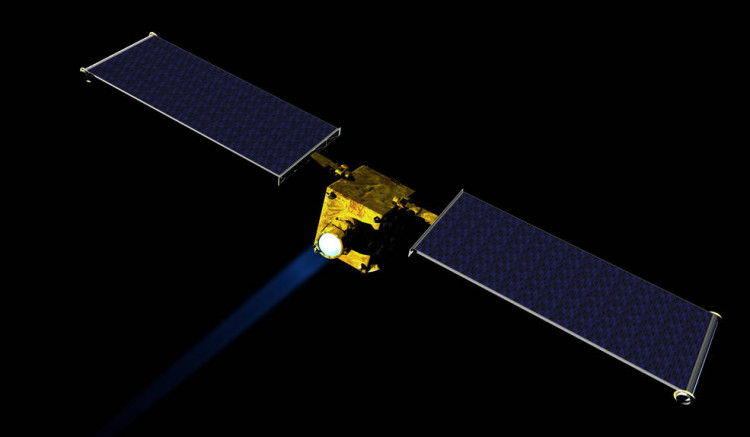If all goes as planned, NASA's Double Asteroid Redirection Test (DART) mission will collide with the asteroid moonlet Dimorphos on Monday, September 26.
The mission, which is overseen by the John Hopkins University Applied Physics Laboratory (JHUAPL), is our first attempt as a species to see if we can change the path of an asteroid, a feat that one day might be necessary to rescue human civilization.
The DART mission was launched on a SpaceX Falcon 9 rocket on Nov. 23, 2021, and is currently speeding into deep space in the direction of the binary near-Earth asteroid (65803) Didymos and its tiny moon Dimorphos.
While altering the orbit of an asteroid 7 million miles distant may appear intimidating, DART team members from NASA and JHUAPL stated during a press conference on Thursday (Sept. 22) that they are optimistic that the years of planning that have gone into the project will result in success.
The DART spacecraft will impact the 560-foot-wide (170-meter) Dimorphos, a moonlet orbiting the 2,600-foot-wide (780-meter) asteroid Didymos, at speeds of 4.1 miles per second (6.6 km/s), or 14,760 mph (23,760 kph).
NASA believes that doing so will adjust Dimorphos' orbital period enough to change its gravitational influence on the larger Didymos, shifting the pair's trajectory.
While DART will be a crucial test of this "kinetic impactor" planetary defense approach, principal scientist and senior climate advisor Katherine Calvin said the mission will also generate vital information that will allow astronomers to look back into the rich history of the solar system.
"We're looking at asteroids to make sure that we don't find ourselves in their path. We also study asteroids to learn more about the formation and history of our solar system. Every time we see an asteroid, we're catching a glimpse of a fossil of the early solar system," Calvin said.
"These remnants capture a time when planets like Earth were forming," she added. "Asteroids and other small bodies also delivered water, other ingredients of life to Earth as it was maturing. We're studying these to learn more about the history of our solar system."
NASA says the first test will assess our ability to develop an autonomously guided spaceship capable of making a kinetic impact on the asteroid. The second test examines how the asteroid reacts to the kinetic collision.
According to Lindley Johnson, NASA's planetary defense officer, DART is a landmark moment in human history.
"This is an exciting time, not only for the agency, but for space history and the history of humankind," Johnson said.






